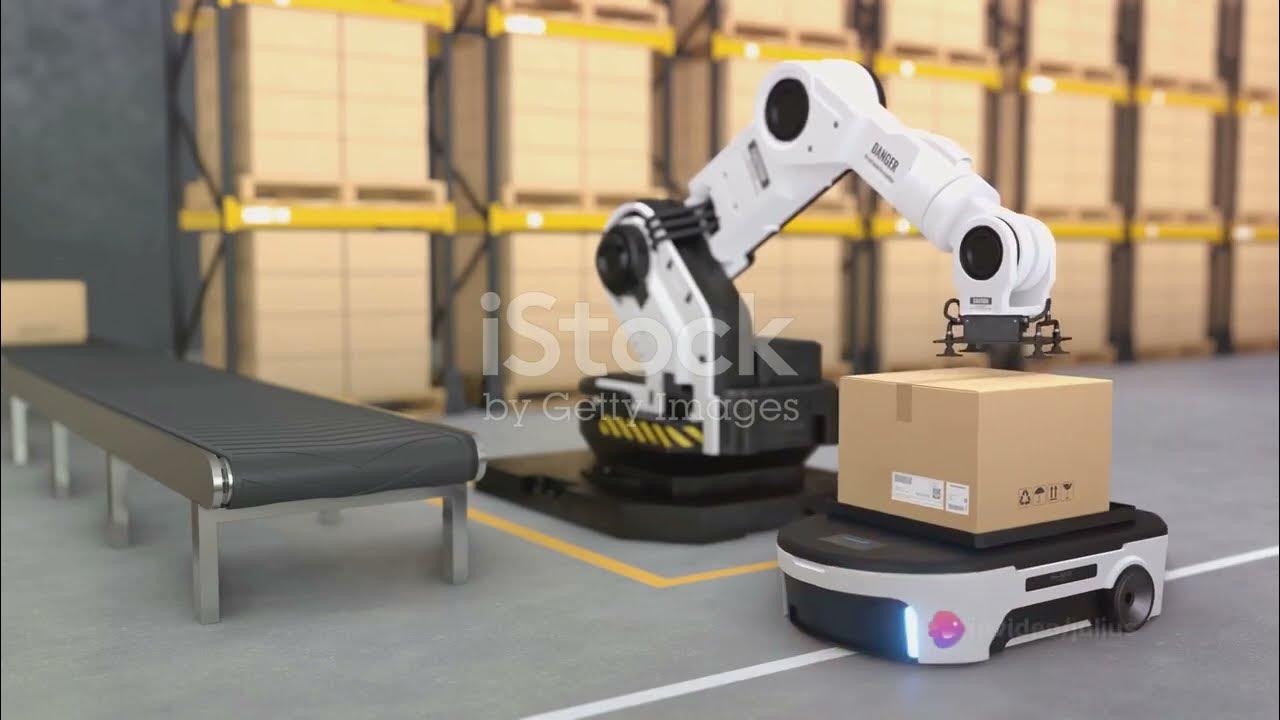Capacitive Sensors in Robotics: A Beginner's Guide
Summary
TLDRThis video explores the world of capacitive sensors, the unsung heroes of robotics. These sensors allow robots to sense their environment without physical contact, using electric fields to detect objects, measure pressure, and track multiple points of contact. The video delves into different types of capacitive sensors, including proximity, touch, force pressure, and multi-touch, and their applications in robotics, from self-driving cars to human-robot interaction. It highlights how these sensors enable robots to work safely alongside humans, handle delicate tasks with precision, and learn from human demonstrations, blurring the lines between humans and machines.
Takeaways
- 🤖 Capacitive sensors are essential for robots to sense their environment without physical contact, enhancing their precision and safety.
- 🌀 Proximity capacitive sensors act as a robot's 'personal space bubble', detecting objects before contact to prevent collisions.
- 🔍 These sensors work by emitting an electric field; disruptions in this field by nearby objects are detected, allowing the robot to gauge distance.
- 🤲 Touch capacitive sensors enable robots to feel physical contact, similar to how smartphone screens respond to touch, allowing for nuanced interaction.
- 🤝 Force/pressure capacitive sensors allow robots to measure the intensity of contact, crucial for tasks requiring delicate handling, like surgery or therapy.
- 🍓 Examples include robots designed for delicate tasks such as picking strawberries without crushing them, showcasing the sensor's precision.
- 🤹♂️ Multi-touch capacitive sensors enable robots to handle multiple points of contact at once, akin to smartphone multi-touch technology.
- 🤝 These multi-touch capabilities can revolutionize human-robot interaction, allowing for teaching robots tasks through physical demonstration.
- 🤖 The integration of capacitive sensors is blurring the lines between humans and machines, suggesting a future where robots are partners and collaborators.
- 🚀 As technology advances, expect to see more innovative applications of capacitive sensors in robotics, potentially transforming various industries.
Q & A
What are capacitive sensors and how do they benefit robots?
-Capacitive sensors are like electric feelers that allow robots to sense their environment without touching anything. They use electricity to detect nearby objects, measure pressure, and track multiple points of contact. This enables robots to be more aware of their surroundings, improving their precision and safety in various applications.
How do proximity capacitive sensors work?
-Proximity capacitive sensors emit a weak electric field around the sensor. When an object enters this field, it disrupts the field, and the sensor detects this change. The closer the object, the stronger the disruption, allowing the robot to judge distances and avoid obstacles.
What applications are proximity capacitive sensors used in?
-Proximity capacitive sensors are used in touchless faucets, automatic doors, parking sensors, and collision avoidance systems in robotics, especially in industrial settings where robots work alongside humans.
How do touch capacitive sensors differ from proximity sensors?
-Touch capacitive sensors detect physical contact, allowing robots to interact with the world in a more nuanced way. They can be embedded in a robot's gripper, fingertips, or skin, enabling the robot to sense touch and pressure in specific areas.
What is the role of force/pressure capacitive sensors in robotics?
-Force/pressure capacitive sensors allow robots to detect contact and measure the intensity of that contact. They consist of two conductive plates separated by a dielectric material, which changes capacitance when pressure is applied. This enables robots to handle delicate tasks that require precise force control.
How do multi-touch capacitive sensors contribute to human-robot interaction?
-Multi-touch capacitive sensors detect changes in capacitance at multiple points simultaneously, allowing robots to track multiple touches, pinches, and gestures. This technology can revolutionize how we interact with robots, enabling more intuitive control and the ability for robots to learn from human demonstrations.
Can you provide an example of how force/pressure capacitive sensors are used in delicate tasks?
-An example is a robot designed to pick strawberries. The sensor in the robot's gripper would allow it to sense the perfect amount of pressure to pick the strawberry without crushing it, ensuring the fruit remains intact.
What potential does multi-touch technology have in the field of robotics?
-Multi-touch technology has the potential to revolutionize human-robot interaction, object manipulation, and robot learning by allowing robots to handle multiple touches at once, mimicking human-like dexterity and responsiveness.
How do capacitive sensors contribute to the safety of robots working in close proximity to humans?
-Capacitive sensors contribute to safety by providing robots with the ability to sense their environment and detect objects or humans before physical contact occurs. This allows the robot to stop or adjust its actions to prevent collisions or harm.
What future applications are anticipated for capacitive sensors in robotics?
-As technology advances, capacitive sensors are expected to enable robots to perform more complex tasks such as surgery, assist with everyday human tasks, and interact with humans in more natural and collaborative ways, potentially even forming partnerships and friendships.
Outlines

Esta sección está disponible solo para usuarios con suscripción. Por favor, mejora tu plan para acceder a esta parte.
Mejorar ahoraMindmap

Esta sección está disponible solo para usuarios con suscripción. Por favor, mejora tu plan para acceder a esta parte.
Mejorar ahoraKeywords

Esta sección está disponible solo para usuarios con suscripción. Por favor, mejora tu plan para acceder a esta parte.
Mejorar ahoraHighlights

Esta sección está disponible solo para usuarios con suscripción. Por favor, mejora tu plan para acceder a esta parte.
Mejorar ahoraTranscripts

Esta sección está disponible solo para usuarios con suscripción. Por favor, mejora tu plan para acceder a esta parte.
Mejorar ahoraVer Más Videos Relacionados

Mastering Control Devices in Robotics: Relays, Timers, PLCs & MCUs Explained!

Capacitive Sensor Explained | Different Types and Applications

Proximity Sensor working. Inductive proximity sensor, capacitive proximity sensor. proximity switch

How Touch Sensors Work: Exploring Capacitive Sensors with the TTP223

Top 10 Analog Inputs in Robotics

Robotics Sensors 1: The Eyes and Ears of Robots
5.0 / 5 (0 votes)
